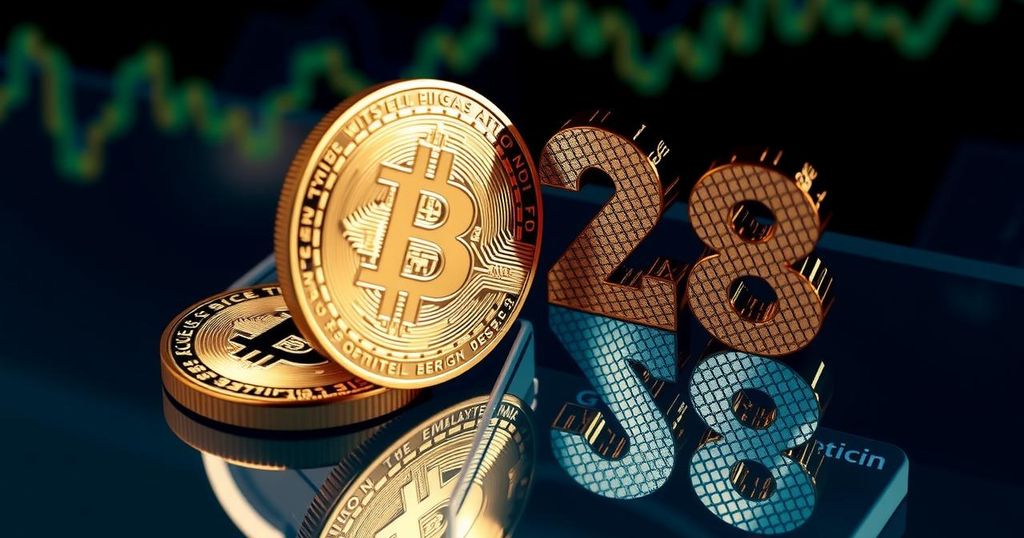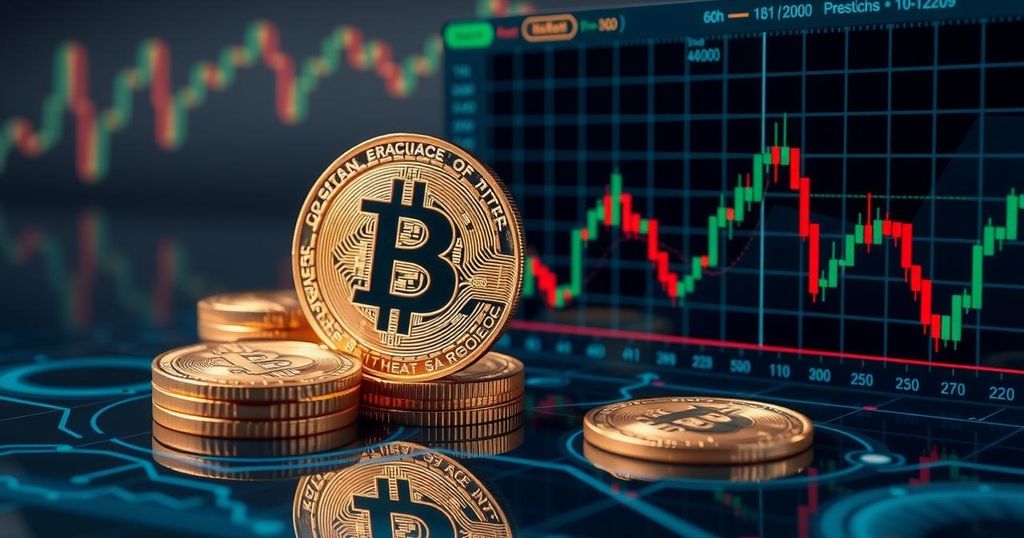Bitcoin Halving 2028: Market Implications and Price Projections
The 2028 Bitcoin halving is expected to reduce miner rewards from 3.125 BTC to 1.5625 BTC, potentially impacting the market significantly. Historical trends suggest that Bitcoin’s price typically increases post-halving, with previous events witnessing dramatic surges. Key factors influencing the upcoming halving include institutional adoption, regulatory clarity, and the economic environment, which will influence Bitcoin’s attractiveness as a store of value.
Bitcoin halving events, which occur approximately every four years, are pivotal moments for the cryptocurrency ecosystem. These events result in reduced rewards for Bitcoin miners—critical participants in the transaction verification and security of the blockchain. As the next halving approaches in 2028, the block reward will decrease from 3.125 BTC to 1.5625 BTC, raising numerous questions concerning the event’s potential impact on market dynamics and Bitcoin’s pricing. Historical trends suggest post-halving price surges, with previous reductions in miner rewards correlating with significant increases in Bitcoin’s value.
Since its inception, the Bitcoin mining reward has declined sharply, from an initial 50 BTC per block in 2009 to the impending 1.5625 BTC. Prior halvings have historically induced substantial price increases; for example, following the 2012 halving, Bitcoin’s price soared from roughly $12 to over $1,000 by late 2013, and after the 2016 halving, it escalated from $650 to nearly $20,000 by the end of 2017. Furthermore, after the 2020 halving, the price surged from around $9,000 to infamously surpass $60,000 in 2021. This trend underscores Bitcoin’s deflationary nature—its supply reduction given constant or increasing demand supports upward price pressures.
Several factors may influence Bitcoin’s trajectory as the 2028 halving approaches. Institutional adoption presents a critical variable, as increasing participation from hedge funds, corporations, and financial institutions will likely enhance Bitcoin’s legitimacy as a hedge against inflation. Moreover, positive developments in the regulatory landscape could stabilize Bitcoin’s market, attracting both institutional and retail investors. Conversely, restrictive regulations may result in diminished investor enthusiasm and market volatility, emphasizing the importance of regulatory clarity moving forward.
The broader international economic environment will also play a significant role in influencing Bitcoin’s price. During times of economic turmoil or inflation, Bitcoin is increasingly viewed as ‘digital gold’—a safer store of value compared to fiat currencies. If inflationary pressures persist, the demand for Bitcoin is likely to rise, particularly as interest in Central Bank Digital Currencies potentially leads individuals to consider decentralized options, such as Bitcoin, which are argued to offer more security and stability.
While making exact price predictions for Bitcoin in 2028 remains challenging, various models speculate that its value may rise significantly due to increased scarcity, with potential estimates reaching between $500,000 and $1 million. Historical parallels suggest post-halving price surges, although these forecasts remain inherently speculative.
In conclusion, the upcoming 2028 Bitcoin halving represents a vital milestone in the cryptocurrency landscape that is poised to significantly impact Bitcoin’s price. Although precise predictions remain elusive, historical evidence indicates that previous halvings have precipitated notable price rises. Investors must exercise caution, given market unpredictability, but analyzing Bitcoin’s cyclical trends may provide valuable insights as the industry approaches this critical juncture.
Bitcoin halvings are critical events that occur approximately every four years, specifically every 210,000 blocks mined. This mechanism decreases the rewards for mining Bitcoin, thereby limiting the rate of new Bitcoin issuance and assisting in managing inflation rates. The next halving, scheduled for 2028, is particularly noteworthy as it will reduce the block reward from 3.125 BTC to 1.5625 BTC. Historical precedent shows that past halvings have routinely resulted in dramatic price increases, alongside varying external factors such as institutional interest, regulatory environments, and the overall economic context. Understanding these aspects is vital to comprehending how the upcoming halving may affect Bitcoin’s market behavior and value.
The 2028 Bitcoin halving is anticipated to be a defining event within the cryptocurrency market, likely influencing Bitcoin’s price substantially. Given the historical patterns associated with past halvings, which have often led to considerable price surges, the upcoming reduction in miner rewards could yield similar effects, barring unexpected market disruptions. Investors should remain aware of the evolving landscape surrounding institutional adoption, regulations, and economic conditions that could shape Bitcoin’s future trajectory.
Original Source: www.analyticsinsight.net








Post Comment